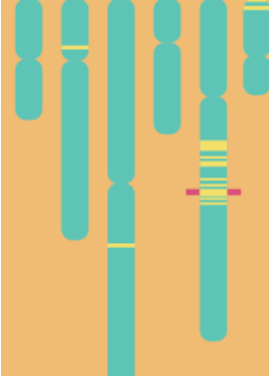用于疾病控制的沃尔巴克氏体释放的进化生态学。
IF 8.7
1区 生物学
Q1 GENETICS & HEREDITY
引用次数: 95
摘要
沃尔巴克氏体是一种内共生的α蛋白细菌,可以通过减少宿主病毒传播(种群置换)或降低宿主种群密度(种群抑制)来抑制虫媒疾病。我们将昆虫种群中的自然沃尔巴克氏体感染与蚊子中的沃尔巴克氏菌转基因进行了比较,以深入了解可能影响沃尔巴克氏氏体释放长期成功的因素。自然沃尔巴克氏体感染可以迅速传播,而传播性感染的缓慢传播是由对宿主适应度和人口统计学因素的有害影响决定的。沃尔巴克氏体产生的细胞质不相容性(CI)是种群置换和抑制计划的核心,但自然界中的CI可以是可变的和进化的,沃尔巴克氏菌适应度效应和病毒阻断也是如此。沃尔巴克氏体的传播也受到环境因素的影响,这些因素降低了沃尔巴克氏菌的滴度并降低了母体沃尔巴克氏杆菌的传播频率。需要更多关于沃尔巴克氏体与宿主细胞核/线粒体基因组之间的相互作用、入侵成功与当地生态因素之间的相互影响以及沃尔巴克氏菌介导的病毒阻断的长期稳定性的信息。《遗传学年度评论》第53卷预计最终在线出版日期为2019年11月23日。请参阅http://www.annualreviews.org/page/journal/pubdates用于修订估算。本文章由计算机程序翻译,如有差异,请以英文原文为准。
Evolutionary Ecology of Wolbachia Releases for Disease Control.
Wolbachia is an endosymbiotic Alphaproteobacteria that can suppress insect-borne diseases through decreasing host virus transmission (population replacement) or through decreasing host population density (population suppression). We contrast natural Wolbachia infections in insect populations with Wolbachia transinfections in mosquitoes to gain insights into factors potentially affecting the long-term success of Wolbachia releases. Natural Wolbachia infections can spread rapidly, whereas the slow spread of transinfections is governed by deleterious effects on host fitness and demographic factors. Cytoplasmic incompatibility (CI) generated by Wolbachia is central to both population replacement and suppression programs, but CI in nature can be variable and evolve, as can Wolbachia fitness effects and virus blocking. Wolbachia spread is also influenced by environmental factors that decrease Wolbachia titer and reduce maternal Wolbachia transmission frequency. More information is needed on the interactions between Wolbachia and host nuclear/mitochondrial genomes, the interaction between invasion success and local ecological factors, and the long-term stability of Wolbachia-mediated virus blocking. Expected final online publication date for the Annual Review of Genetics, Volume 53 is November 23, 2019. Please see http://www.annualreviews.org/page/journal/pubdates for revised estimates.
求助全文
通过发布文献求助,成功后即可免费获取论文全文。
去求助
来源期刊

Annual review of genetics
生物-遗传学
CiteScore
18.30
自引率
0.90%
发文量
17
期刊介绍:
The Annual Review of Genetics, published since 1967, comprehensively covers significant advancements in genetics. It encompasses various areas such as biochemical, behavioral, cell, and developmental genetics, evolutionary and population genetics, chromosome structure and transmission, gene function and expression, mutation and repair, genomics, immunogenetics, and other topics related to the genetics of viruses, bacteria, fungi, plants, animals, and humans.
 求助内容:
求助内容: 应助结果提醒方式:
应助结果提醒方式:


